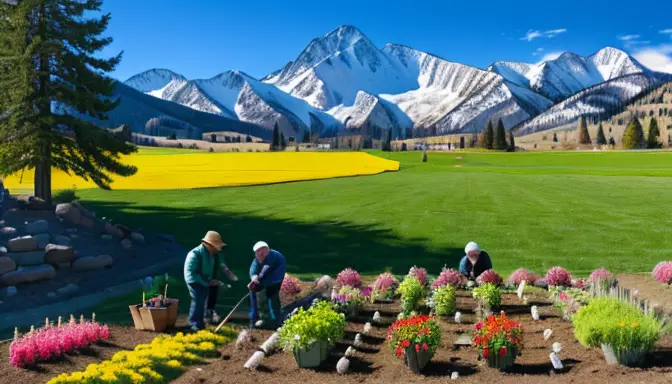Knowing the ideal timing for planting grass seed in Idaho is crucial for a successful lawn. Factors such as climate, soil conditions, and grass type play a significant role in determining the best time to sow grass seed.
Understanding Idaho’s Climate
Idaho boasts a diverse climate that varies from continental to semi-arid, presenting unique challenges and opportunities for lawn care enthusiasts. The specific climate of your region in Idaho is a crucial factor when determining the ideal time to plant grass seed. From the snowy peaks of the Rocky Mountains to the lush valleys, Idaho’s climate influences the success of your lawn. By understanding the climate patterns, temperature fluctuations, and precipitation levels in your area, you can better prepare for the planting season and ensure the health and vitality of your grass.

Types of Grass Suitable for Idaho
When it comes to choosing the right grass for your Idaho lawn, it’s essential to consider the types of grass that are best suited for the diverse climates of the state.
Here are some of the top grass types that are suitable for Idaho:Different grass species thrive in Idaho’s varying conditions, ensuring that you can find the perfect match for your lawn..
- Kentucky Bluegrass: Known for its lush, dense growth and cold tolerance, Kentucky Bluegrass is a popular choice for Idaho lawns.
- Tall Fescue: With its deep root system and drought tolerance, Tall Fescue is well-suited for Idaho’s semi-arid regions.
- Perennial Ryegrass: This fast-growing grass type is ideal for overseeding in Idaho and can withstand heavy foot traffic.
- Fine Fescue: Fine Fescue varieties like Chewings, Hard, Sheep, and Creeping Red are excellent choices for Idaho’s cooler regions.
Each of these grass types offers unique characteristics that cater to Idaho’s climate and soil conditions. By selecting the right grass seed based on your specific needs and preferences, you can ensure a vibrant and healthy lawn that thrives throughout the seasons.
Spring Planting in Idaho
Spring is a vibrant season in Idaho, signaling the perfect time to plant grass seed for a lush and healthy lawn. The warming temperatures and increased sunlight create an ideal environment for grass seed germination and growth. However, before diving into spring planting, it’s essential to consider some key factors to ensure success.
When spring arrives in Idaho, the soil begins to thaw, making it easier to work with and prepare for planting. This thawing process allows for better seed-to-soil contact, promoting germination. Additionally, the increased moisture from melting snow and spring showers provides essential hydration for the newly planted seeds.
One crucial consideration for spring planting is the risk of unexpected frosts. While spring brings warmer weather, Idaho’s climate can still surprise with late frosts that may harm young seedlings. To mitigate this risk, consider covering your newly seeded areas with protective material during cold nights.
For optimal
results, choose grass seed varieties that are well-suited for spring planting in Idaho.These grass types are resilient to Idaho’s temperature fluctuations and can withstand the challenges of early growth stages.Cool-season grasses like Kentucky bluegrass and fescue thrive in the state’s climate, establishing strong roots during the spring months..
To ensure successful spring planting, follow a consistent watering schedule to keep the soil moist but not waterlogged. Adequate hydration is crucial for seed germination and root development. Additionally, consider fertilizing your newly planted grass to provide essential nutrients for healthy growth.



